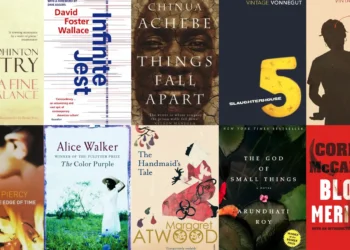Discuss some critical assumptions about the epitaph of the Elegy
Thomas Gray’s Elegy Written in a Country Churchyard is a well-known poem that considers mortality, the passage of time, and the human condition. The elegy comes to a moving end with the final stanza, also known as the epitaph. This passage of the poem provides a space for contemplation on life, death, and the legacy of the common man. It has been the subject of many interpretations and critical presumptions. We examine the epitaph’s themes, language, and wider implications as we dig into some important presumptions.
Reflections on Mortality:
The epitaph’s profound reflection on mortality is one of its key tenets. Gray muses over the destiny of the “rude Forefathers of the Hamlet,” recognizing their meek existence and the certainty of their demise. The word “rude” emphasizes these people’s ordinaryness by implying simplicity, possibly in both lifestyle and grave markers. The epitaph turns into a reflection on how death is universal and unaffected by social standing or material success.
Discuss some critical assumptions about the epitaph of the Elegy-The phrase “Some village-Hampden, that with dauntless breast,” alludes to the idea of an unsung hero within the village community. Here, Hampden becomes a symbol of courage and resistance, standing against tyranny. The juxtaposition of the humble village setting with the potential for extraordinary bravery underscores the idea that greatness can emerge from the most unexpected places.
Communal Legacy and Shared Humanity:
The epitaph’s emphasis on shared humanity and the collective legacy is a further crucial premise. Gray’s emphasis on the common man emphasizes the idea that every life adds to the story of humanity as a whole, no matter how small it may seem. The epitaph suggests that the stories of the unnamed villagers are interwoven with the larger tapestry of human history, immortalizing their modest, hardworking lives.
Discuss some critical assumptions about the epitaph of the Elegy-By highlighting the potential Hampden within the village, Gray encourages readers to recognize the latent greatness in every individual. The notion of a “dauntless breast” speaks to the resilience and courage that can be found even in those whose stories might otherwise go untold. In this way, the epitaph challenges hierarchical distinctions and emphasizes the shared human experience.
Social Critique and Class Distinctions:
The epitaph subtly engages in a social critique, questioning societal norms and class distinctions. The mention of the “rude Forefathers” suggests a certain rustic simplicity, contrasting with the grandeur and opulence often associated with monumental epitaphs. Gray, a keen observer of societal structures, challenges the prevailing emphasis on wealth, status, and aristocratic lineage.
Also Read-
- Write a critical summary of Gulliver’s Travels Book IV
- How does the novel foreground that cultural colonization and geographical conquering go hand in hand
- What is the The Way of the World solution to the Hobbesian power struggle
Discuss some critical assumptions about the epitaph of the Elegy-The mention of the “hoary-headed Swain” further emphasizes the aging process and the passage of time. The term “Swain,” typically associated with a rustic or country laborer, draws attention to the hardworking individuals who, despite their toil, might not receive recognition in life but find acknowledgment in death. The epitaph thus becomes a subtle commentary on the inequities present in society.
Literary Allusions and Cultural Significance:
Gray’s use of literary allusions within the epitaph assumes a certain cultural significance. The mention of the “short and simple annals of the Poor” echoes classical elegiac traditions, aligning the lives of the common villagers with the literary conventions of mourning and remembrance. The emphasis on simplicity rejects ornate language, aligning with Gray’s broader aesthetic choices in the poem.
The epitaph’s cultural resonance is further heightened by the reference to the “peasant’s lot.” Gray’s engagement with pastoral imagery aligns with the tradition of pastoral elegy, where rural scenes and rustic characters serve as vehicles for contemplation on life, death, and the human condition. The epitaph assumes a cultural depth by drawing on literary traditions that connect the lives of ordinary people with timeless themes.
Personal Reflection and Authorial Voice:
The epitaph assumes a tone of personal reflection, embodying Gray’s contemplative voice. The poet engages in a dialogue with the reader, inviting them to ponder the significance of the lives laid to rest in the village churchyard. The use of the first person in phrases like “I,” “my breast,” and “my lay” imparts a sense of intimacy, as if Gray himself is sharing his thoughts directly with the reader.
Discuss some critical assumptions about the epitaph of the Elegy-This personal reflection extends to the broader themes of the elegy, where Gray contemplates his own mortality and the idea of posthumous fame. The epitaph becomes a vessel for Gray’s own philosophical musings on life’s transience and the enduring power of literature to memorialize the human experience.
Ambiguity and Universal Applicability:
The epitaph’s deliberate ambiguity allows for various interpretations, contributing to its universal applicability. Gray does not explicitly name the village or its inhabitants, leaving room for readers to project their own experiences and emotions onto the scene. The epitaph becomes a canvas onto which individuals can imprint their reflections on mortality, legacy, and the passage of time.
The term “Some village-Hampden” allows for a degree of universality. It is not a specific individual but a representative figure, embodying the potential for greatness within any community. The ambiguity of the epitaph opens it up to a wide range of cultural and personal interpretations, making it a poignant and relatable meditation on the human condition.
Conclusion
FAQ:
1. How does Gray’s epitaph reflect on mortality?
The epitaph reflects on mortality by acknowledging the fate of the “rude Forefathers” and emphasizing the universality of death. Gray contemplates the transience of life and the inevitability of death, creating a meditative atmosphere that prompts readers to reflect on their own mortality.
2. What is the communal legacy highlighted in the epitaph?
The epitaph underscores the communal legacy of ordinary individuals, suggesting that every life contributes to the collective narrative of humanity. It immortalizes the anonymous villagers, emphasizing their shared humanity and the significance of their stories within the broader context of human history.
3. How does the epitaph engage in social critique and challenge class distinctions?
The epitaph subtly critiques societal norms and class distinctions by portraying the “rude Forefathers” in contrast to the grandeur often associated with monumental epitaphs. It challenges the prevailing emphasis on wealth, status, and aristocratic lineage, suggesting that greatness and courage can emerge from the most unexpected places.
4. What literary allusions contribute to the cultural significance of the epitaph?
Gray’s use of literary allusions within the epitaph aligns the lives of the common villagers with classical elegiac traditions. The mention of the “short and simple annals of the Poor” connects the poem to timeless themes of mourning and remembrance, adding cultural depth to the epitaph.
5. How does Gray’s use of ambiguity contribute to the universal applicability of the epitaph?
The epitaph’s deliberate ambiguity allows for various interpretations, making it universally applicable. By not explicitly naming the village or its inhabitants, Gray invites readers to project their own experiences and emotions onto the scene, fostering a broad range of cultural and personal interpretations.
















